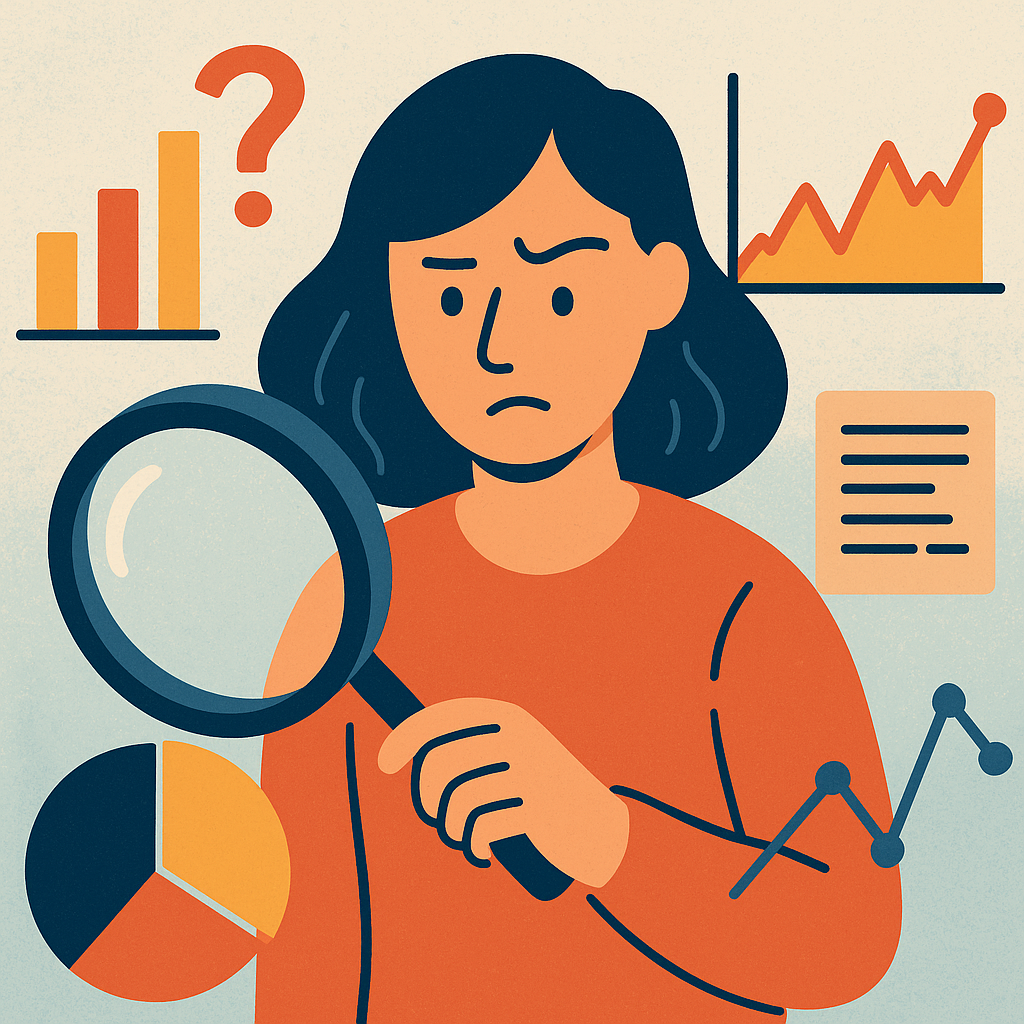We are usually bombarded with percentages, graphs, averages, and studies. But how to think critically about numbers in the news is not a skill that comes naturally—it’s learned, and it’s more crucial than ever. Understanding numbers means understanding reality, and often, that reality is hidden behind manipulative graphs or cherry-picked stats.

Why Numbers in the News Often Mislead You
Let’s face it—numbers can lie, or at least mislead. Journalists are under pressure to grab your attention, and what better way than “Study finds 60% increase in cancer risk!” Sounds scary, right? Until you learn the baseline risk was 0.01%. That “increase” isn’t meaningful to your daily life, but it sure gets clicks.
Here are common techniques used to manipulate numbers:
- Relative vs. Absolute Risk: A 100% increase sounds massive, but going from 1 in 10,000 to 2 in 10,000? Not so much (Gigerenzer et al. 2007).
- Truncated Graphs: When the y-axis doesn’t start at zero, differences seem exaggerated, even when minimal (Tufte 2001).
- Cherry-picked Data: Selecting only data that supports a narrative while ignoring contradicting evidence.
- Statistical Significance Misuse: Findings with a p-value <0.05 are considered “significant,” yet they may not be practically important.
Five Essential Rules to Evaluate Numbers in the News
1. Always Ask: “Compared to what?”
Context is everything. A statement like “violence has doubled in 10 years” tells you nothing without knowing the baseline. Was it 2 incidents per 100,000 people and now it’s 4? That’s still a very low rate.
2. Be Wary of Causal Claims
Many news stories use language like “X causes Y” when the study merely showed a correlation. Unless it’s a randomized controlled trial, be cautious about cause-and-effect conclusions.
Example: “People who drink red wine daily live longer.” Maybe, but perhaps red wine drinkers are also wealthier and have better healthcare access.
3. Inspect the Graphs
Visual data is powerful but easy to manipulate. Look for:
- Y-axis starting above zero
- Compressed or stretched axes
- Misleading 3D visuals
- Omitted labels or unclear scales
Even small distortions can completely alter your perception of a trend.
4. Investigate the Original Study
Many articles don’t link to the study they’re referencing. If you can, find the original research. Check for:
- Sample size
- Peer review status
- Funding sources
- Reproducibility
A study with 20 participants and no peer review isn’t reliable evidence.
5. Ask if It’s Reproducible
The replication crisis in science shows many published studies can’t be repeated with the same results. Be skeptical of one-off findings—especially if they haven’t been confirmed by other research.
Modern Examples of Misleading Numbers in the News
Vaccine “Effectiveness” Numbers in the News
During the COVID-19 pandemic, headlines like “The vaccine is 95% effective” caused confusion. What most people didn’t know was:
- That 95% refers to relative risk reduction
- Absolute risk reduction was closer to 1% in the study population (Brown 2021)
Mental Health Epidemic
Articles often cite statistics like “1 in 4 adults suffer from mental illness.” But definitions of “mental illness” vary widely between studies—ranging from clinical depression to occasional anxiety. Broad definitions inflate numbers (Twenge et al. 2019).
Inflation & Economic Reports
Governments and media outlets often quote inflation rates (e.g., CPI) without explaining:
- What’s included (housing? food?)
- Whether it’s adjusted for seasonal changes
- Whether it’s based on urban or rural data
This leads to vastly different perceptions depending on which data subset is highlighted.
Tools & Tips to Improve Your News Numeracy
To become a more discerning reader, apply the following tools:
The CRAAP Test
Evaluate each number or statistic by asking:
- Currency: Is the data up to date?
- Relevance: Is it directly tied to the topic?
- Authority: Who collected or published the data?
- Accuracy: Can it be verified?
- Purpose: Is there a hidden agenda?
The SIFT Method (Caulfield 2020)
- Stop: Don’t trust before verifying
- Investigate the source
- Find better coverage
- Trace claims to the original context
Free Online Fact-Checking Tools
- Statista: For verified statistics
- PubMed: Peer-reviewed medical studies
- Google Scholar: Source cross-referencing
- Media Bias Fact Check: For evaluating outlet credibility
Real-World Application: A Step-by-Step Case
News Headline: “Heart attacks doubled among coffee drinkers!”
Step 1: Compare to what?
From what rate to what rate? 1 in 10,000 to 2 in 10,000? That’s still very low.
Step 2: What kind of study?
Was it observational, cross-sectional, or experimental? If it’s observational, no cause can be inferred.
Step 3: How was it measured?
Self-reported caffeine intake? That’s not reliable. Also, what counts as a “heart attack” in this study?
Step 4: Sample size and demographic
Did the study cover 50 college students or 100,000 adults across age groups?
Step 5: Confounding variables
Were other lifestyle factors like smoking or exercise controlled for?
Result: The headline is misleading. The story likely cherry-picked alarming language from a limited study.
Why This Matters: Protecting Democracy and Public Health
Misinformation isn’t just annoying—it’s dangerous. Whether it’s overblown crime stats that fuel fear-based policies or exaggerated health risks that create public panic, poorly presented data can shift elections, fund harmful policies, or lead to personal harm.
Knowing how to think critically about numbers in the news isn’t optional anymore. It’s essential literacy for a functioning society.
Numbers in the News: Conclusion
The modern media landscape is filled with numbers—but not all of them are trustworthy. As readers, we have a responsibility to question, analyze, and validate before believing or sharing.
Remember these key takeaways:
- Always seek context (“Compared to what?”)
- Watch for correlation vs causation
- Scrutinize graphs
- Validate study quality and reproducibility
- Use tools like CRAAP and SIFT to double-check facts
With these skills, you’ll be far less likely to fall for sensationalist stats and far more equipped to make informed decisions—whether it’s voting, buying, or simply staying informed.
References
1. Tom & David Chivers, How to Read Numbers: A Guide to Statistics in the News (and Knowing When to Trust Them) (2021)
View on Wikipedia
2. “Five rules for fact-checking shaky statistics in the news,” WIRED (Mar 19, 2021)
Read the WIRED article
3. Misuse of statistics, Wikipedia (updated recently)
Explore on Wikipedia






